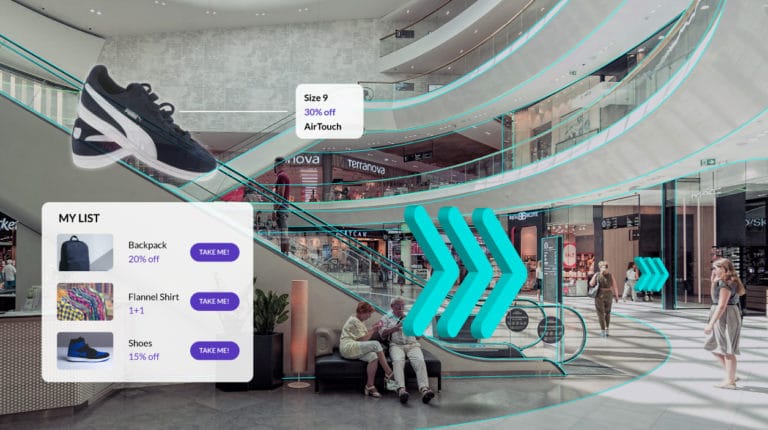
One of AR’s core properties is to fuse the physical and digital (a.k.a. phygital). Part of this involves physical places: AR devices have to understand a space before they augment it. This breathes new opportunity into the longstanlocation intelligence sector.
For example, Foursquare — the king of location intelligence — has an experimental project to power audio AR experiences. Known as Marsbot for AirPods, it utilizes Foursquare’s signature location data to inform you audibly about local points of interest as you walk by them.
With AR’s more common visual connotations, we likewise see activity such as Google Lens and Live View, which contextualize local storefronts. Niantic drives SMB marketing through Pokémon Go, and Snap’s Local Lenses bring Snapchat’s signature lenses to local streets.
Collectively, we call this AR’s Space Race. It’s a competitive battleground in spatial computing that will continue to develop and unlock considerable value in the next decade.
Interactive Airspace
The latest move in AR’s Space Race crossed our desks recently: Brookfield Properties will offer AR ad inventory throughout its shopping centers. The new program will open up 150 million square feet of “airspace” for virtual ad placement across 100 locations in 42 states.
In other words, it will offer the physical space throughout its shopping centers as ad inventory for brands to geo-anchor AR ads. One way this will play out is in-mall brands and retailers influencing foot traffic through interactive promotions seen through mobile AR interfaces.
The nature of those interfaces is a key question, as AR is usually activated through a specific combination of device, app, and call-to-action. For Brookfield, this will happen through its partner, The Aria Network — a media network that offers physical-space AR activations.
It’s unclear how Aria reaches consumer endpoints such as apps, web and AR devices. In-mall activations could have better luck with QR-code activated web AR versus apps. And onboarding will have to be simple and clear as AR is too early and unproven for consumers to work for it.
As these UX components are optimized, there’s ample opportunity to make shopping-center airspace more interactive. Beyond ads, Aria provides utilities like in-mall wayfinding. Replacing the traditional 2D mall directory could be a welcome innovation (and “touchless“).
To that end, consumers have raised their digital game in the Covid era. Now as they return to physical-world shopping, will their newfound digital comfort levels and expectations carry over with them? If so, it could create fertile ground for AR in offline retail shopping.
Activation Energy
Back to the point about making AR activation easy and clear, this could be the make-or-break factor for Brookfield or any other entities that attempt to infuse AR into their physical spaces. Because AR is so new, it has to piggyback on other established behavior (just ask Snap).
Brookfield could also take a page from Google’s book in offering AR with a clear value exchange. Specifically, it offers an AR-powered utility for navigating city streets. This navigation use case could be equally valuable in shopping centers, as we’ve seen from innovators like ARWay.
Another way to get users to go through the trouble of opening a given app and holding up their phones — a new behavior for most consumers — is through financial incentive. If there are discounts unlocked through AR ads that float in virtual space, it could accelerate adoption.
In any case, AR use cases like the above always seem like a no-brainer at first. But considering the nuances of the on-site UX — including awareness and activation energy — it gets more complicated. Geolocated AR will be opportune, but it needs cultural acclimation and education.
If Brookfield and others can get past some of those adoption barriers, the payoff is potentially sizable. And now’s the right time as physical-world shopping returns. One thing is for sure: Shopping malls and the broader retail world could certainly use some tech-fueled differentiators.
Header image credit: Resonai

